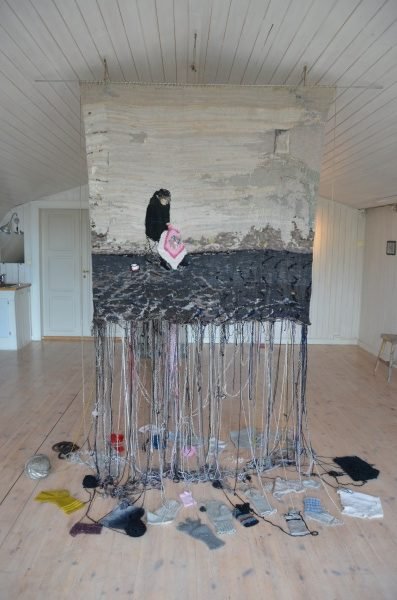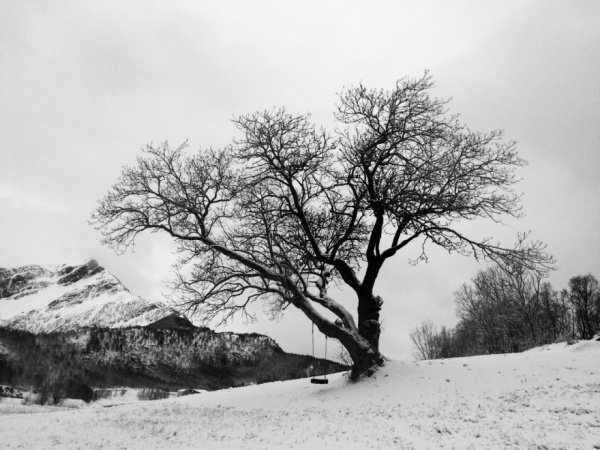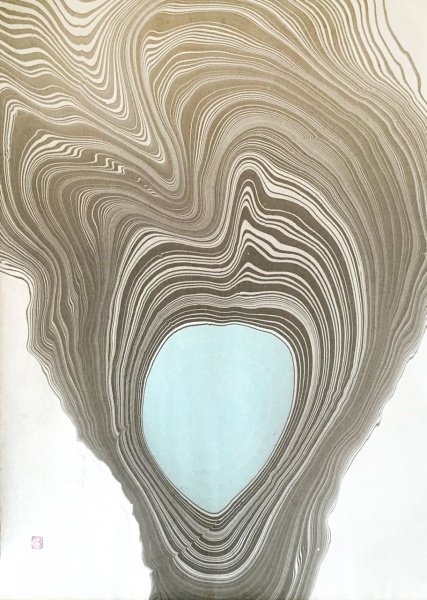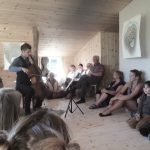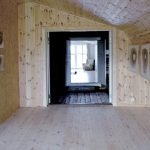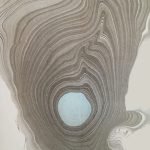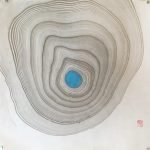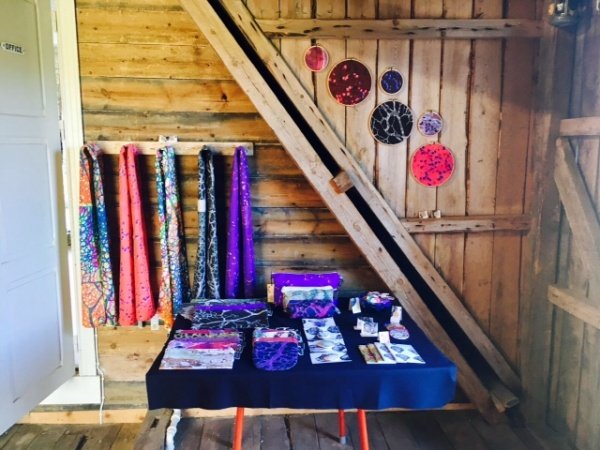Kari Steihaug: Syersken i Trastevere
The main exhibitor this year was textile artist Kari Steihaug. For a number of years she has gathered woollen garments and imperfect and unfinished knitting projects which she transforms into artwork. Her works reflects the work stories, experience and memory of many hands both privately and collectively. She has exhibited in Norway and abroad. The work exhibited in the show was originally made for Soft Gallery in Oslo and was shown there in March / April 2017.
As part of the exhibition, Kari Steihuag also held the workshop STOPP, an ongoing workshop where Kari reclaims the lost art of darning. The Norwegian word for darning is to stopp, so the word has a double meaning – to darn and to stop – to reassess, reclaim, remember and revive.
Kari likes repairing to make the holes more visible, like jewellery made with lovely colours and perhaps darned with a golden thread. The act of mending and the story behind the holes become lifted and visible and the garments are once again in one peace but perhaps more beautiful than before.
Reuse and recycling are central elements but Kari also poses important questions about time and stories. Where has the time gone to repair our broken clothes? What are the stories behind the holes and how can these become the subject of conversations? How can we create spaces to darn socks and at the same time stop and dwell on time and wear? Does our ability to darn our socks also have a connection with sustainability and climate change?
The workshop was selected as a Soft Moment and received funding from Norske Textilkunstnere (Norwegian Textile Artists). The Norwegian arts magazine Se Kunst made a good article about the event. See link to PDF in the right column.
Clive Ardagh: Remarkable Trees in Steigen
Steigen is known for its varied and beautiful scenery; from the old and lush cultural landscape to the mighty and wild peaks. Although they are often overlooked in this magnificent landscape, the trees are important elements of the area. Trees have been loved and elevated by cultures throughout history. Many gardens in Steigen contain exotic species for this latitude. This project focuses on native species in the cultural landscape and in the mountains. In this climate the trees do not grow very tall, yet they have a lot of character, and some of them are as well known and loved as the mountains. People in Steigen have sent photographs and stories about their favorite trees, and the artist has interpreted these, and show his own photos and share the stories that people have told.
Eva Bakkeslett: Ripple Effects
Already in the twelfth century, the Japanese experimented with sumi-ink floating on the surface of water. They called it suminagashi, which means liquid ink. The delicate, swirling, circular patterns flow on the water surface and are then transferred to handmade washi paper. There is something magical about the process where ink and time flow together and shape drawings of unknown landscapes.
In the exhibition, I showed a series of prints where I explored this old, Japanese technique.
Sally Gilford: Textile works
Sally Gilford is an artist, maker and creative practitioner, specialising in printed textiles and public engagement. She is interested in cross art form processes and collaborations in manufacture and artistic practice.
Sally explores the connections between art and science, creating distinctive and innovative responses to original images of scientific research; her work poses questions about our own mortality.
Through her work as a creative practitioner, she facilitates the exploration of mutli disciplinary art forms to encourage self-expression and creative experimentation. Working with collections and exhibitions of internationally recognised galleries and museums, her intuitive approach empowers and inspires.
She graduated from Manchester Metropolitan University with a BA (hons) Interactive Art in 2007 and has been based at Islington Mill Studios, Salford in the UK since 2009 where she also co-founded screen print specialists One69A.

